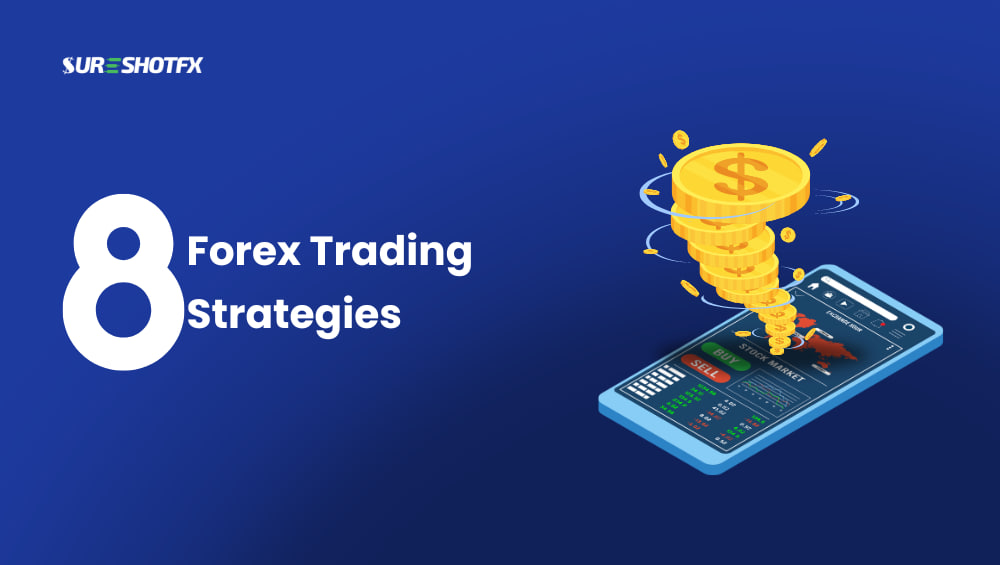8 Forex Trading Strategies That Will Help You Begin Confidently

Forex trading is a diverse platform. As a trader you can approach forex trading in different ways, depending on your goals, risk taking capability and time. In this blog, we will discuss about 8 common forex trading strategy. Additionally, we will help you compare their pros and cons.
To help you choose a forex trading strategy that will work for you, we have created a bubble chart that shows how each strategy ranks on these three criteria-
1. Higher risk-to-reward ratio = More profitable strategy
2. Lower time investment = Lesser time needed to monitor trades
3. Frequency of trading opportunity= how often you can find suitable trades in the market
Thus, larger bubble means more trading opportunities offered by the forex trading strategy. Now, lets look at each strategy in more detail.
Forex Trading Strategy: Price Action
Price action forex trading strategy involves studying the price movements and patterns of the market to identify trading signals. Price action traders do not rely on indicators or fundamentals, but rather on their own interpretation of the market. Price action trading can be applied to any time frame and market condition, as long as the trader can read the price action accordingly.
Range Trading
Range trading strategy is trading within a defined price range, where the market is moving sideways without a clear trend. Range trading requires support and resistance levels (they are price points where the market tends to bounce or reverse) to enter and exit trades. You may also use oscillators like RSI CCI or Stochastics to identify overbought and oversold conditions, where the market is likely to turn around.
Trend Trading
This forex trading strategy involves following the direction of the market, whether it is up, down, or sideways. By using moving averages, trend lines, or channels- you can identify the trend and trade in its direction. Trend trading may require using MACD, to confirm the trend and spot potential reversals. Trend trading can be very profitable in the long run, as trends can last for weeks, months, or even years.
Position Trading
This forex trading strategy requires holding positions for the long term, based on fundamental factors or macroeconomic trends. Position trading does not focus on short-term fluctuations, but rather focus on the big picture of the market.
Position traders use technical analysis, such as the Elliott Wave Theory, to support their fundamental analysis and identify entry and exit points. Position trading requires a lot of patience, discipline, and capital, as the trades can take a long time to unfold and involve large price movements.
Day Trading
This forex trading strategy means opening and closing positions within the same trading day, without holding any overnight risk. Day traders use short-term price movements and volatility to make profits, using technical analysis, indicators, and chart patterns to find trading opportunities. You can also use high leverage and tight stop losses to magnify your returns and limit losses. Day trading requires a lot of time, attention, and skill, as the trades are fast and frequent, and the market can change quickly.
Scalping
This strategy involves taking small profits from very short-term trades, sometimes lasting only a few seconds or minutes. Scalping requires the use high leverage and large trade volumes to exploit minor price changes in the market. You will be using technical analysis, indicators, and price action to find trading signals.
Scalpers also use automated trading systems or algorithms to execute their trades quickly and accurately. Scalping requires a lot of discipline, concentration, and stress management, as the trades are very intense and risky, and the margins are very thin.
Swing Trading
Forex trading strategy like swing trading involves holding positions for a few days to a few weeks, taking advantage of medium-term price movements and market cycles. You will need to use both technical and fundamental analysis to identify trading opportunities, using indicators, patterns, and trends to time their entries and exits.

You will need to use risk management techniques, such as stop losses and take profits, to protect their positions and lock in their gains. Swing trading offers a balance between the time investment and the risk-reward ratio, as the trades are not too short or too long, and the profits are not too small or too large.
Carry Trading
Forex trading strategy that requires borrowing a low-interest currency and investing in a high-interest currency, earning the interest rate differential between the two currencies. Carry traders use fundamental analysis to select the currency pairs with the highest interest rate gap and the lowest risk of depreciation.
Carry traders also use technical analysis to confirm the trend and avoid sudden reversals. Carry trading can be very profitable in the long term, as the interest income can compound over time, but it also involves high risk, as the exchange rate can change significantly and wipe out the profits.
Conclusion
These are some of the most popular forex trading strategies that you can try. However, remember that there is no one-size-fits-all strategy that works for everyone. You need to find a strategy that matches your personality, skills, and resources, as well as the market conditions.
You also need to test and refine your strategy before applying it to the real market, using a demo account & back-testing. Finally, you need to follow your strategy with discipline and consistency, and always use proper risk management and self-control.
Needless to say, there is always an EASY WAY to make EASY MONEY in FOREX. HOW? – JOIN SURESHOTFX and START COPY TRADING!



It’s true that there’s no single strategy that works for everyone in Forex trading. The key is finding an approach that suits your style, skills, and goals. Testing strategies with a demo account and back-testing is essential before diving into real trades. Platforms like SureShotFX can also help by providing market insights and signals that can complement your strategy. Ultimately, consistency, discipline, and solid risk management are the foundation for long-term success. It’s all about refining your approach and sticking to it!
Thanks for your comment.
DON’T MISS! Summer 45% BIG SALE going on at SureShotFX
For queries contact at SSF Support